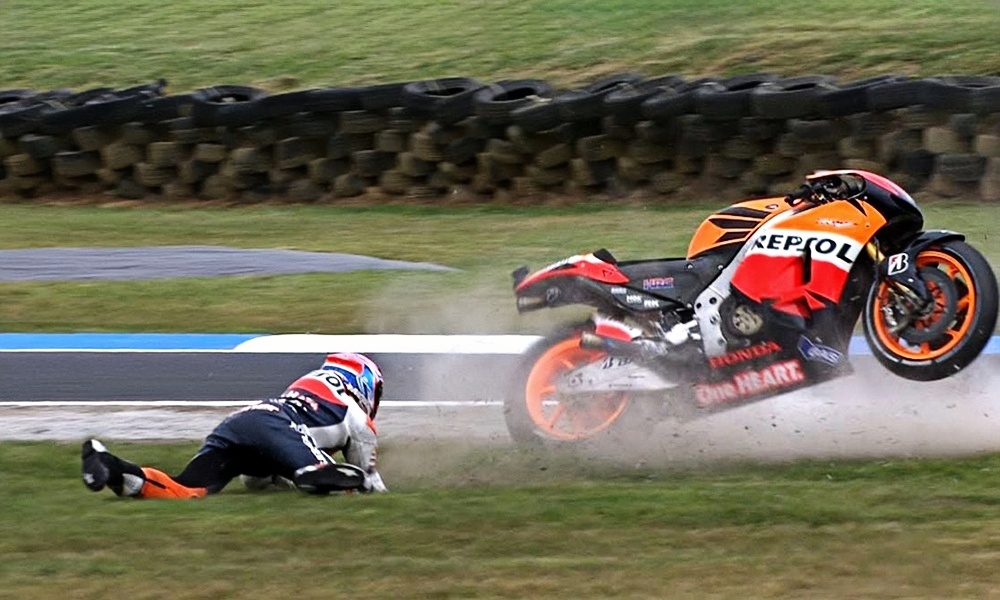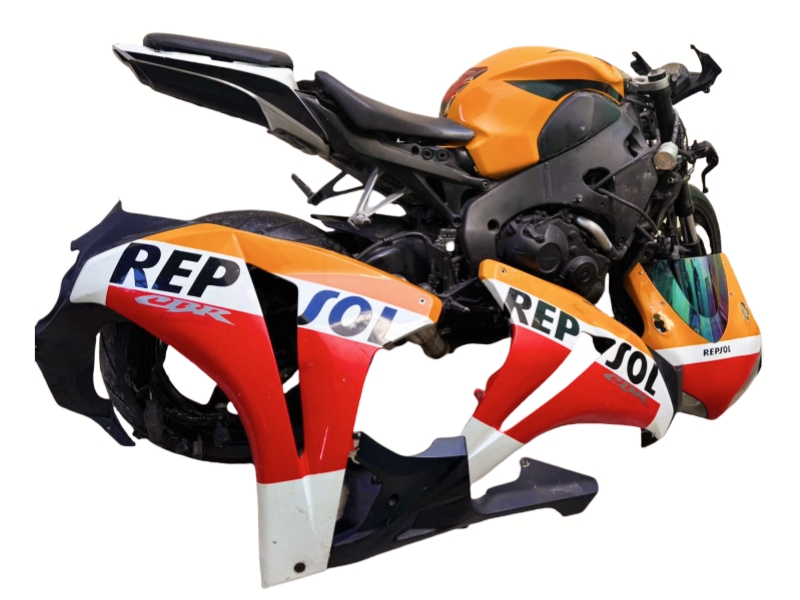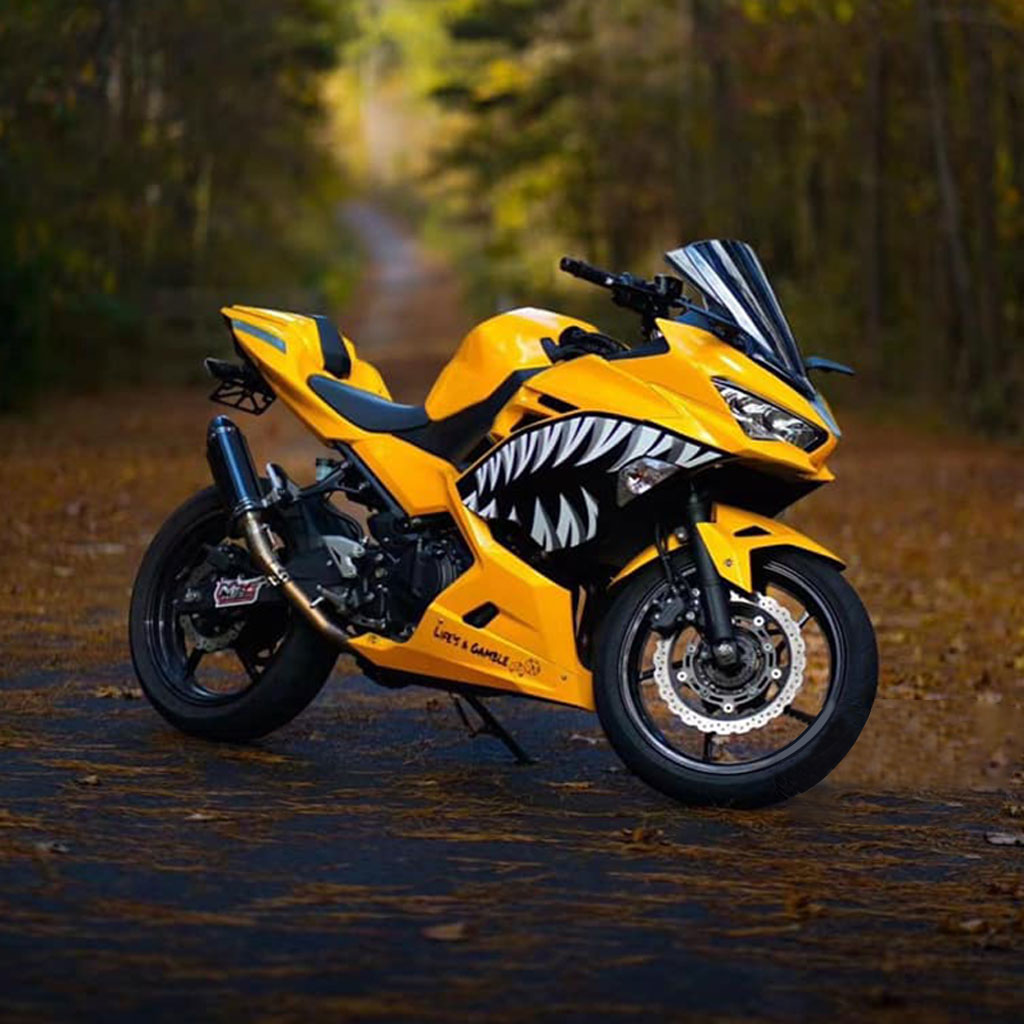Common Motorcycle Accident Risks and How to Avoid Them

Riding a motorcycle is exciting but also very risky. Motorcyclists are 28 times more likely to die in motorcycle accidents than car drivers. In 2022, 6,218 motorcyclists died in motorcycle accidents. Knowing these risks and being careful can help prevent crashes.
Key Takeaways
Motorcyclists face big dangers like head-on crashes and left-turn accidents. Stay in your lane and make sure others can see you.
Always wear safety gear like helmets and jackets. This gear keeps you safe in crashes and helps others notice you.
Ride defensively by staying aware and obeying traffic rules. This helps you spot dangers early and lowers your risk of accidents.
Common Risks of Motorcycle Accidents
Head-On Collisions
Head-on crashes are very dangerous for motorcyclists. These happen when a car moves into the wrong lane or when a rider misjudges while passing. Motorcycles don’t have much protection, making these crashes worse. Stay safe by keeping in your lane, driving at a safe speed, and being careful on two-lane roads.
Left-Turn Accidents
Left-turn crashes are a big cause of motorcycle accidents. Drivers turning left often watch for cars but miss motorcycles. In Michigan, 42% of two-vehicle motorcycle crashes happen during left turns. To stay safe, assume drivers might not see you. Slow down and make sure you’re visible at intersections.
Speeding and Reckless Riding
Speeding causes many deadly motorcycle crashes. Going too fast makes it hard to control the bike and avoid sudden dangers. Studies show speeding riders often get serious injuries, even with helmets. Follow speed limits and ride carefully to stay safe.
Impaired Driving (Alcohol or Drugs)
Riding after drinking or using drugs is very risky. Alcohol slows your thinking, balance, and reaction time. In 2021, one-third of motorcycle deaths involved riders with a BAC of 0.08% or more. Never ride if you’ve been drinking or using drugs. It’s not worth the danger.
Statistic Description | Percentage |
|---|---|
Fatal crashes with BAC ≥ 0.08% | 84% |
Fatal crashes with BAC ≥ 0.15% | 55% |
Lane Splitting
Lane splitting means riding between slow-moving cars. It can save time but is risky if done too fast. Research says it’s safer at speeds under 50 mph. The danger increases if the speed difference is over 15 mph. Be careful when lane splitting and avoid it in heavy traffic.

Road Hazards (Potholes, Debris, Weather Conditions)
Motorcycles are more affected by road hazards than cars. Potholes, gravel, and debris can make you lose control. Bad weather like rain or snow makes it harder to see and ride safely. Check the weather before riding and avoid bad roads when possible.
Lack of Rider Experience
New riders often cause accidents because they lack skills. In 2021, 36% of motorcyclists in fatal crashes didn’t have a proper license. Beginners may take risks or feel too confident. Take safety classes and practice often to become a better rider.
How to Avoid Motorcycle Accident Risks
Ride Responsibly and Follow Traffic Laws
Ride safely to avoid accidents. Always obey traffic rules like speed limits. Don’t weave through cars or make sudden lane changes. Watch other drivers and predict their moves to stay safe.
Benefit | Description |
|---|---|
Following Traffic Rules | Obeying speed limits and signals lowers accident chances. |
Defensive Riding | Watching others and staying alert keeps you safer. |
Polite Riding | Creates a good image and reduces crash risks. |
Wear Proper Safety Gear (Helmet, Gloves, Jacket, Boots)
Wearing safety gear can protect you in a crash. Helmets shield your head from injuries. Jackets, gloves, and boots guard against scrapes and bruises. Bright clothing helps others see you better, lowering crash risks.
Tip: Helmets absorb shocks, and gloves/jackets prevent scrapes. Pick gear that fits well and meets safety rules.
Maintain Visibility (Use Lights, Avoid Blind Spots)
Motorcycles are small and hard to see. Use headlights, even during the day, to stand out. Stay out of blind spots, especially near big trucks. Wear bright or reflective clothes to be more visible.
Using lights makes it easier for others to see you.
Staying out of blind spots helps avoid crashes.
Regular Motorcycle Maintenance
A well-kept bike is safer to ride. Check tire pressure and tread often. Make sure brakes work and replace worn pads. Test all lights before riding. Clean and oil the chain to avoid problems.
Tires: Look for wear and check air pressure.
Brakes: Check pads and fluid levels.
Lights: Make sure all lights work.
Chain: Clean and oil it regularly.
Understand and Practice Motorcycle Handling
Good riding skills help prevent accidents. Take a safety class to learn braking, turning, and handling rough roads. Practice often to get better and react faster. Training also teaches how to avoid dangers on the road.
Safety classes teach important skills for tricky situations.
Defensive riding helps you avoid road hazards.
Avoid Riding Under the Influence
Never ride after drinking or using drugs. These slow your reactions and affect balance, making crashes more likely. If you drink, find another way home or wait until sober.
Stay Alert and Anticipate Road Hazards
Pay attention to the road at all times. Watch for potholes, debris, and bad weather. Adjust your speed to match road conditions. Don’t use your phone while riding. Careful riding lowers accident risks.
The Role of an Experienced Motorcycle Accident Attorney
When to Seek Legal Help After a Motorcycle Accident
After a motorcycle crash, you may feel stressed. Medical bills, lost pay, and bike damage can pile up. This is when a skilled motorcycle accident lawyer can help. They work to get you money for medical care and emotional pain. If your bike needs fixing or replacing, they fight for fair payment. Don’t wait too long—acting fast helps build a strong case.
How Attorneys Can Help Protect Your Rights
A good motorcycle accident lawyer knows how to defend your rights. They collect proof like police reports and witness accounts. This helps hold the person at fault responsible. They also deal with insurance companies to get you fair payment. Lawyers understand the unfair views people may have about riders. They use facts to fight these views and get fair treatment. Their skills in talking with others often lead to better deals, avoiding long court cases.
The Importance of Legal Guidance in Complex Cases
Some motorcycle crashes are harder to handle than others. For example, cases with unclear fault or road problems need expert help. Lawyers check all medical costs, even future ones, to get you the most money. They talk to insurance companies so you don’t have to. With their knowledge, they gather key papers and proof to make your case strong. Having a smart lawyer helps you get fair treatment and focus on healing.
The Importance of Safety Awareness

Benefits of Defensive Riding
Defensive riding helps keep you safe on the road. It means staying alert, spotting dangers early, and acting fast to avoid crashes. A safety class can teach you these important skills.
Learn to notice dangers before they cause problems.
Practice quick stops and swerves to handle emergencies.
Training builds confidence for tricky situations on the road.
By riding defensively, you lower your risk of accidents. It’s not just about avoiding crashes—it’s about riding smarter and staying safe every time.
Educating Yourself on Motorcycle Safety
Knowing safety rules makes a big difference in riding safely. Learning about motorcycle safety helps you handle road challenges better. Safety classes are a great way to start. They teach defensive riding and how to spot hazards.
Learn to ride in bad weather or on rough roads.
Emergency skills prepare you for sudden dangers.
Education and good gear reduce your chances of getting hurt.
When you learn more, you protect yourself and make roads safer for everyone.
Encouraging a Culture of Safety Among Riders
Safety is not just personal; it’s a group effort. Promoting safety among riders can save lives. For example, helmets lower the chance of death by 37% for riders and 41% for passengers. They also reduce head injuries by 69%.
Motorcycle clubs and police often promote safe riding. They host events, share advice, and encourage helmet use. Joining these efforts helps create safer roads for all riders.
Tip: Set a good example. When you focus on safety, others will follow.
Motorcycle crashes don’t have to happen. Being prepared and careful can lower your risks a lot. Start by making safe choices like wearing a helmet and obeying traffic rules. Helmets save many lives each year and cut head injuries by 69%.
Proof Type | Numbers | Benefit |
|---|---|---|
Helmet Saves Lives | 37%-41% | Stops deaths |
Injury Prevention | 69% | Lowers head injury risk |
Lives Saved (2019) | 1,872 | Thanks to helmet use |
Money Saved | $3.5B | From helmets in 2019 |
By focusing on safety, you can enjoy riding and stay protected. Start today to make every ride a safe one.
FAQ
What should you do right after a motorcycle accident?
Look for injuries and call 911 for help. If safe, move to a secure area. Share details with others and take pictures of the accident scene.
How can you lower the chance of a motorcycle accident?
Use safety gear and obey traffic rules. Keep your motorcycle in good shape and practice defensive riding to avoid dangers.
Is lane splitting allowed in all states?
No, lane splitting rules differ by state. Check your state’s laws before doing it to stay legal and safe.
See Also
Tips for Staying Safe During Your Initial Motorcycle Journey
Essential Safety Guidelines for Riders Using Motorcycle Fairings
Key Advice for Constructing Your Ideal Motorcycle

